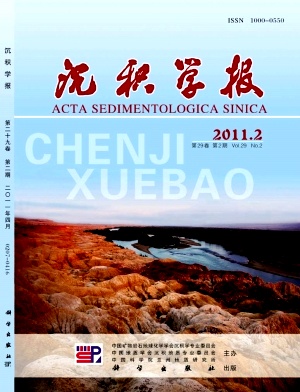Formation Temperature of Dawsonite from Qingshankou Formation in the Honggang Oilfield, Southern Songliao Basin
- Received Date: 1900-01-01
- Rev Recd Date: 1900-01-01
- Publish Date: 2011-04-10
-
Key words:
- Honggang Oilfield
Abstract: This article mainly use the Hong143 and Hong146 well that rich in dawsonitebearing sandstones as reaearch objiects.According to the analysis of conventional thin sections, alizarin redstaining, SEM, INCA energy spectromete, microthermometry , the diagenetic paragenesis succession of dawsonitebearing sandstones, in particular, the homogenization tempreature of fluid inclusion have been studied in detail. The diagenetic paragenesis of the Honggang Oilfield is clay minerals→secondary quartz overgrowths→calcite→dawsonite→ankerite→quartz healing microfracture. On the basis of intensive microthermometry, the peak of the homogenization tempreature is 110~120℃ in the calcite; while 130~140℃ in the quartz healing microfracture. The formation temperature of dawsonite is between calcite and quartz healing microfracture, which is 120~130℃. Comparing with research results at home and abroad, the formation temperature of dawsonite that is transformed by magma is relatively low , which is 25~150℃. The formation temperature of dawsonite that appeared in the inclusion as daughter mineral is relatively high,which is 250~340℃. The dawsonite in the southern Songliao Basin belong to the first situation, the formation temperature is relatively low, which is 120~130℃. Scanning electron microscopy and energy spectrum analysis shows that the dawsonite of Hong gang oil filed (The formation of temperature between 120~130℃) is mainly needlelike, the chemical composition is rich in Si, poor in Na, Al and O; the dawsonite of Wuerxun Depression (The formation of temperature between 78.56~115.02℃) is mainly columnar pin, chemical composition is rich in Na, Al and O, poor in Si.
| Citation: | YU Zhichao. Formation Temperature of Dawsonite from Qingshankou Formation in the Honggang Oilfield, Southern Songliao Basin[J]. Acta Sedimentologica Sinica, 2011, 29(2): 293-302. |






 DownLoad:
DownLoad: